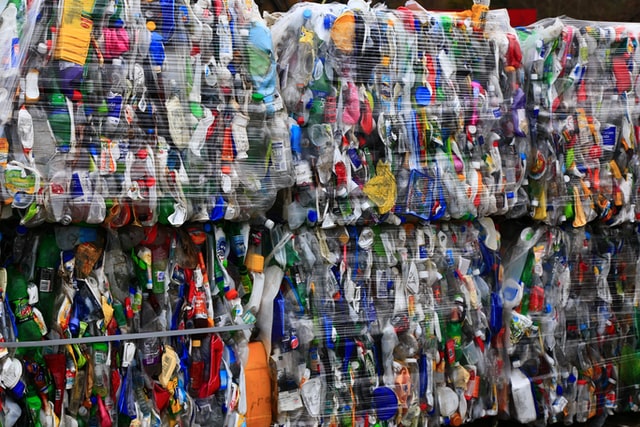Our planet is under immense pressure. With the effects of climate change becoming increasingly obvious, it is important to switch our ways and rethink how we go about our daily lives.
One of the best methods to significantly reduce the impact we have on our surroundings is to cut down on plastic waste. Indeed, plastic items take decades – if not centuries – to degrade. For instance, single-use objects such as plastic bags will be around for 20 years. Plastic straws and bottles, instead, will stay in our environment for about 200 and 450 years respectively.
In this respect, the French government is taking tangible action. From 2021, plastic cups, cutlery, and straws, as well as Styrofoam takeaway boxes, have been banned from commerce altogether. This was the first step of what is an extensive, multi-year programme that intends to phase out single-use plastic items and packaging by 2040.
Single-use plastic laws will have a considerable effect on industries that rely on substantial packaging. Specifically, what will this mean for French food and drink businesses? Will they receive financial support to help bring about this necessary change? Electrix, expert manufacturers of coffret électrique encastré, explore what the switch to more recyclable sources will look like.
It’s a wrap on plastic packaging
As mentioned, France aims to nullify the use of single-use plastic packaging in just under 20 years’ time. The programme has been broken down into five-year plans, with the target to reduce, reuse, and recycle (“3R”) environmentally harmful packaging.
The first 3R decree shares a number of collective objectives, including the reduction of single-use plastic packaging by 20% by the end of 2025. Not only that, but it also aims to move towards binning ‘unnecessary’ plastic wrapping completely, such as blisters around light bulbs and batteries.
As for the food and drink sector, notable changes have already been put into place. This is particularly true for the packaging of fruit and vegetables in supermarkets. On 1st January 2022, a ban on plastic packaging for around 30 fruit and vegetables came into effect. What this means is that products such as apples, lemons, kiwis, melons, potatoes, cucumbers, and carrots (among many others) can no longer be sold in plastic. By the end of June 2023, cherry tomatoes, peaches, and green beans will join the list, whereas mushrooms, asparagus, and cherries will follow suit in 2024. Finally, fruit sellers will have until 2026 to find alternative ways to wrap delicate berries, including strawberries and raspberries.
Before the law was enforced, it was estimated that 37% of fruit and vegetables was sold in plastic packaging. With its introduction, the French government is confident that the ban will decrease the amount of single-use plastic wrapping by 1 million units.
But what alternative solutions can the food and drink market embrace in response to new plastic laws? The truth is that there are a number of options to choose from, and one of them could be the total removal of packaging from products. Selling specific loose produce, however, can have challenges of its own, as potential buyers in supermarkets may be put off by other customers touching unwrapped foods.
That said, food and drink companies can consider substituting their packaging material. Rather than plastic wrapping, opting for metal, cardboard, or glass containers can go a long way in making their products more eco-friendly. Reusable packaging can also be a great strategy, as it will allow clients to repurpose the container and prevent avoidable wastage. Moreover, simpler and lighter wrapping can also do the trick, and recyclable resins are always an excellent alternative.
When the time comes for other products to shed their plastic packaging, from cold cuts and fish to dairy products and frozen foods, businesses can already be a step ahead of the game.
A helping hand
Tackling plastic waste is a fundamental goal we should all strive to achieve. The food and drink industry is certainly in pole position to drive this vital change. French fast-food restaurants will eliminate the usage of any plastic, throwaway crockery for meals consumed inside the locale from January 2023.
However, it is fair to say that the sector on the whole will need a generous helping hand. Food and drink businesses have been struggling financially for several years, and the events of the past periods have accentuated the problem. During the recent (and ongoing) health crisis, companies suffered on average a fall of 22% in their annual turnover. Alongside this, they have had to deal with the increasing costs of raw materials.
Therefore, it is expected that the French government will support food and drink businesses in their efforts to reduce plastic packaging. In fact, financial aid will pave the way for restaurants, bars, and the sector to meet these fundamental – yet ambitious – plastic-free targets. Ultimately, it will allow them to switch to greener, recyclable resources.
Bans on single-use plastic packaging is a welcome change. As our ailing planet continues to suffer the effects of climate change, reducing plastic waste is an important step to take. The food and drink industry is already playing its part and will keep doing so in the years to come. With support from the authorities, and by finding alternative wrapping solutions, the field, on the whole, can truly make a positive difference to the well-being of the environment.
Sources
https://www.euronews.com/2021/10/12/france-to-ban-plastic-packaging-for-30-fruit-and-vegetables
https://edition.cnn.com/2021/10/12/europe/france-ban-plastic-packaging-intl-hnk/index.html
https://www.ecologie.gouv.fr/sites/default/files/MTE-Summary-3R-ENG.pdf


